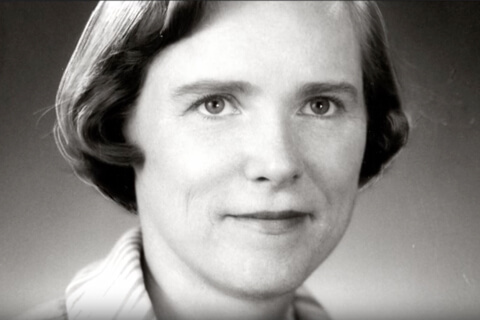Biography: Dr. Barbara Bates

Year: 1974
Achievement: Dr. Barbara Bates developed and wrote a guide to patient history taking that has become the standard text for medical students.
Barbara Bates further developed the role of the nurse-practitioner, and wrote a guide to patient history-taking that has become the standard text for health practitioners and medical students. Her book, Guide to Physical Examination and History Taking, first published in 1974, has been published in several revised editions and includes a twelve-part video supplement, A Visual Guide to Physical Examination.
Bates grew up in Auburn, New York, where her father was a general surgeon, and her mother a registered nurse. She decided to pursue a medical career while in her junior year at Smith College. She attended Cornell University Weill Medical College and got her M.D. degree in 1953. Dr. Bates stayed on at New York Hospital and Cornell Medical College until 1958, when she joined an internal medicine practice in Greenwich, Connecticut.
In 1961 she was recruited to join the faculty at the new University of Kentucky College of Medicine, a school intended to provide physicians and better medical care to the underserved Appalachian region. The school aimed to build a cooperative, team-oriented approach to care among physicians, nurses, and social workers. In 1967, Dr. Bates moved to the University of Rochester School of Medicine, to oversee the training of medical residents and to participate in the Rochester Regional Medical Care Program in western New York.
In Rochester, she became an activist in interdisciplinary practice, further developing the then new role of nurse-practitioner, and working to improve access to primary health care services through interdisciplinary practice. She became well known as an outstanding professor of medicine, especially for her expertise in diagnosis and her ability to teach student doctors and nurses the skills of examination and clinical thinking. In 1970, realizing that the standard text used to teach physical examination was not user-friendly, she developed a guide to physical exam and history-taking for use by her nurse-practitioner students. Ten nurses and five physicians who met during the spring of 1970, and called themselves "The Clandestine Group," helped her with the project. The first guide was hand-drawn, and its organization was based on ornithologist Roger Tory Peterson's popular guides to American birds. Introductory chapters in Bates's book discuss interviewing techniques, the health history, common and important symptoms, and assessing the mental status of the patient. Specific chapters review anatomy and physiology, physical examination techniques, and selected abnormalities. Illustrated summary tables for each chapter are marked with red tabs for easy access.
Aside from birdwatching, a hobby that inspired the structure of her guide, Dr. Bates had a deep interest in the history of medicine, and completed a master's degree in history at the University of Kansas in 1978. She published Bargaining for Life: A Social History of Tuberculosis 1876-1938 in 1992 after ten years of research and writing.
Bates received recognition for her work in both medicine and history, receiving the University of Pennsylvania School of Nursing Award for Outstanding Contributions to Education in 1984, and the American Association for the History of Nursing Lavinia L. Dock Award for Historical Scholarship and Research in 1993.

Asterix Dr. Barbara Bates
Asterix Dr. Barbara Bates
Dr. Barbara Bates changed how medical professionals learn the skills of physical examination and diagnosis. And, she developed the role of Nurse-Practitioners. At the University of Rochester in the 1970's, she came to think that special training could prepare nurses to share with doctors some of the responsibilities of patient care. She also became particularly interested in how physicians are trained to diagnose patients. As she taught the skills of physical examination and clinical thinking, she realized the standard teaching text used by students was not user-friendly. She began meeting with a group of ten nurses and five physicians. They called themselves “The Clandestine Group,' and they worked to completely re-think the teaching guides. The result of their efforts was a hand-drawn, informative, and easy-to-use text for nurse-practitioner students. The book's organization was based on the popular bird-watching guide by Roger Tory Peterson. Introductory chapters addressed interview techniques, taking notes on health history, common and important symptoms, and assessment of mental health. Specific chapters also made it easy to look up anatomy and physiology. Techniques for physical exams were described in detail. The first edition of Dr. Bates's 'Guide to Physical Examinations and History Taking” was published in 1974. Since then it has become a standard textbook for nursing and medical training programs.









